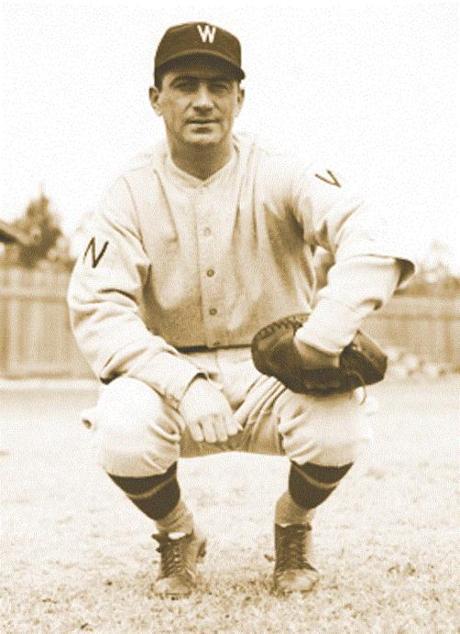From an email sent to me by John Molloy, Chairman of the National Vietnam & Gulf War Veterans Coalition.
He asks: “Wonder why Hollywood never touched this story?”
 Moe Berg
Moe Berg

A second-rate baseball player but a first-rate spy.
When baseball greats Babe Ruth and Lou Gehrig went on tour in baseball-crazy Japan in 1934, some fans wondered why a third-string catcher named Moe Berg was included.
The answer was simple: Berg was a U.S. spy. Speaking 15 languages—including Japanese—Moe Berg had two loves: baseball and spying.
In Tokyo, garbed in a kimono, Berg took flowers to the daughter of an American diplomat being treated in St. Luke’s Hospital–the tallest building in the Japanese capital. He never delivered the flowers.
The ball-player ascended to the hospital roof and filmed key features: the harbor, military installations, railway yards, etc.
Eight years later, General Jimmy Doolittle studied Berg’s films in planning his spectacular raid on Tokyo.
Berg’s father, Bernard Berg, a pharmacist in Newark, New Jersey, taught his son Hebrew and Yiddish. Moe, against his wishes, began playing baseball on the street aged four. His father disapproved and never once watched his son play.
In Barringer High School, Moe learned Latin, Greek and French. He graduated magna cum laude from Princeton—having added Spanish, Italian, German and Sanskrit to his linguistic quiver. During further studies at the Sorbonne, in Paris, and Columbia Law School he picked up Japanese, Chinese, Korean, Indian, Arabic, Portuguese and Hungarian—15 languages in all, plus some regional dialects. While playing baseball for Princeton University, Moe Berg would describe plays in Latin or Sanskrit.
During World War II, Berg was parachuted into Yugoslavia to assess the value to the war effort of the two groups of partisans there. He reported back that Marshall Tito’s forces were widely supported by the people and Winston Churchill ordered all-out support for the Yugoslav underground fighter, rather than Mihajlovic’s Serbians.
The parachute jump at age 41 undoubtedly was a challenge. But there was more to come in that same year.
Berg penetrated German-held Norway, met with members of the underground and located a secret heavy water plant—part of the Nazis’ effort to build an atomic bomb. His information guided the Royal Air Force in a bombing raid to destroy the plant.
There still remained the question of how far had the Nazis progressed in the race to build the first Atomic bomb. If the Nazis were successful, they would win the war. (Most of Germany’s leading physicists had been Jewish and had fled the Nazis mainly to Britain and the United States.)
Berg (under the code name “Remus”) was sent to Switzerland to hear leading German physicist Werner Heisenberg, a Nobel Laureate, lecture and determine if the Nazis were close to building an A-bomb. Moe managed to slip past the SS guards at the auditorium., posing as a Swiss graduate student. The spy carried in his pocket a pistol and a cyanide pill. If the German indicated the Nazis were close to building a weapon, Berg was to shoot him—and then swallow the cyanide pill. Moe, sitting in the front row, determined that the Germans were nowhere near their goal, so he complimented Heisenberg on his speech and walked him back to his hotel.
Moe Berg’s report was distributed to Britain’s prime minister, Winston Churchill, President Franklin D. Roosevelt and key figures in the team developing the Atomic Bomb.
Roosevelt responded: “Give my regards to the catcher.”
After the war, Moe Berg was awarded the Medal of Merit—America’s highest honor for a civilian in wartime. But Berg refused to accept, as he couldn’t tell people about his exploits. After his death, his sister accepted the Medal and it hangs in the Baseball Hall of Fame, in Cooperstown, N.Y.
When the war ended, Moe Berg found himself unemployed. He did receive occasional intelligence assignments, including a visit to the Soviet Union, where his ability to speak Russia was valuable. Traveling with other agents, when asked for credentials, by a Soviet border guard in Russian-dominated Czechoslovakia, he showed the soldier a letter from the Texaco Oil company, with its big red star. The illiterate soldier was satisfied.
Roosevelt once described Moe Berg as a “most unusual fellow.” Berg would often drop in, unannounced, at friends’ homes—expecting to be fed. He always wore a black suit (he had eight), a white shirt and a black tie.
Berg lived with his brother Samuel for seventeen years and, when evicted, spent his last final years with his sister, Ethel. A lifelong bachelor, he never owned a home or even rented an apartment. He never learned how to drive.
When someone criticized him for wasting his talent, Berg responded: “I’d rather be a ballplayer than a justice on the U.S. Supreme Court.”
His interest in baseball continued throughout his life. Moments before he died (aged 70), Berg asked his nurse: “How are the Mets doing today?”
For more details on this extraordinary man, see Wikipedia’s entry on Moe Berg.
~Eowyn

